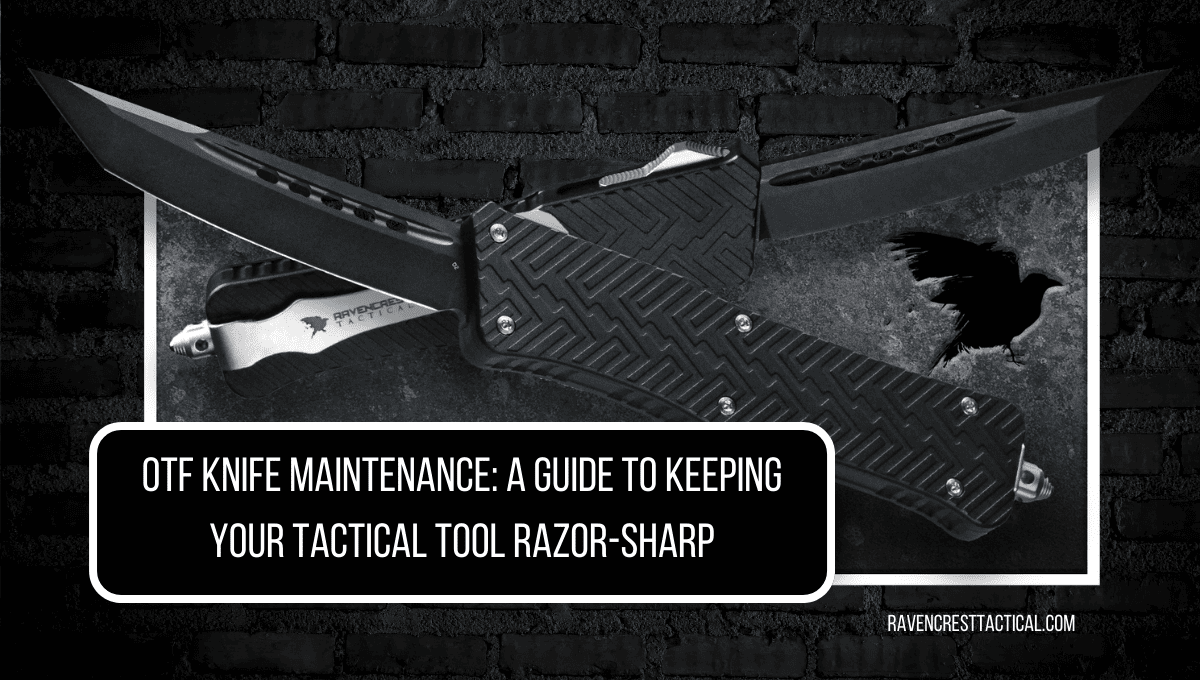OTF Knife Maintenance: A Guide to Keeping Your Tactical Tool Razor-Sharp

Welcome to the world of OTF (Out The Front) knives, where precision and reliability are paramount. Whether you’re a seasoned knife enthusiast or a newcomer to the realm of tactical tools, understanding the ins and outs of OTF knife maintenance is crucial for ensuring longevity and optimal performance. In this comprehensive guide, we’ll delve into the nitty-gritty details of OTF knife care, covering everything from cleaning and lubrication to troubleshooting common issues.
The Anatomy of an OTF Knife
Before we jump into the maintenance routine, let’s take a moment to familiarize ourselves with the key components of an OTF knife. These knives consist of a blade housed in a handle that opens and closes through the front. Understanding the mechanics of your OTF knife is essential for effective maintenance.
Blade Types and Materials
OTF knives often feature varying blade styles, including tanto, drop point, and spear point. The choice of blade material, such as stainless steel or high-carbon steel, impacts the knife’s sharpness, durability, and corrosion resistance. Knowing the specifics of your OTF knife’s construction will inform your maintenance approach.
Handle Construction
OTF knife handles can be made from materials like aluminum, titanium, or polymer. Each material requires specific care to maintain its appearance and functionality over time. Additionally, some models may feature textured grips for enhanced handling, adding another layer to the maintenance process.
Establishing a Maintenance Routine
Now that we’re acquainted with the basics, let’s dive into the step-by-step process of maintaining your OTF knife.
Cleaning Your OTF Knife
Regular cleaning is crucial for preventing dirt, debris, and moisture from compromising your knife’s performance. Here’s a simple cleaning routine to follow:
- Disassembly: Carefully disassemble your OTF knife, following the manufacturer’s guidelines. This usually involves removing the blade and taking apart the handle components.
- Cleaning the Blade: Wipe the blade with a clean, lint-free cloth to remove any surface dirt or residue. For stubborn stains, a gentle application of rubbing alcohol can be used.
- Handle and Spring Cleaning: Clean the handle and the internal spring components with a soft brush to dislodge any debris. Ensure all parts are thoroughly dry before reassembly.
Lubricating Your OTF Knife
Proper lubrication is essential to maintain smooth blade deployment and retraction. Follow these steps for effective lubrication:
- Selecting the Right Lubricant: Choose a high-quality, lightweight knife oil or lubricant recommended by the manufacturer. Avoid using heavy oils that can attract dirt and grit.
- Applying Lubricant: Apply a small amount of lubricant to the blade pivot area, ensuring even coverage. Work the blade in and out to distribute the lubricant evenly.
- Handle Lubrication: Apply a thin layer of lubricant to the internal components of the handle, paying attention to the spring and any moving parts.
Sharpening Your OTF Knife
Maintaining a sharp edge is essential for the functionality of your OTF knife. Here’s a quick guide to sharpening:
- Selecting a Sharpening Tool: Choose a reliable sharpening tool, such as a whetstone or a guided sharpening system.
- Angle and Technique: Follow the manufacturer’s recommendations for the sharpening angle. Use steady, controlled strokes to maintain a consistent edge.
- Honing the Blade: Finish the sharpening process by honing the blade with a fine-grit stone to achieve a razor-sharp edge.
Troubleshooting Common Issues
Even with regular maintenance, OTF knives may encounter issues. Here are some common problems and their solutions:
Blade Misalignment
If you notice that your blade is not deploying or retracting smoothly, misalignment may be the issue. To fix this:
- Inspect the Blade Track: Check for any debris or obstructions along the blade track. Clean the track thoroughly.
- Adjust the Pivot Screw: Use the appropriate screwdriver to make slight adjustments to the pivot screw until the blade moves smoothly.
Spring Tension
Inconsistent spring tension can affect the knife’s overall performance. Here’s how to address it:
- Check for Debris: Inspect the spring mechanism for any debris or buildup. Clean and lubricate the spring components.
- Adjust the Spring Tension: Some models allow for spring tension adjustment. Refer to the manufacturer’s instructions for guidance.
Blade Edge Chips or Dullness
Even with regular sharpening, blades can become chipped or dull. To address this:
- Assess Blade Condition: Inspect the blade for any chips or nicks. Minor issues can often be addressed by sharpening, but significant damage may require professional maintenance.
- Professional Sharpening: If you’re unsure about sharpening or if the damage is extensive, consider sending your knife to a professional sharpening service.
Final Take on OTF Knife Maintenance
By incorporating regular maintenance into your routine, you can keep your OTF knife in peak condition, ready to tackle any task that comes your way. Remember, a well-maintained knife is not just a tool; it’s an investment in reliability and longevity.
As you embark on your journey to master OTF knife maintenance, consider exploring the impressive range of OTF tactical knives available at RavenCrest Tactical. Their commitment to quality and innovation ensures that you’ll be equipped with a top-tier tool for any situation. Visit https://ravencresttactical.com/otf-knife-models/ to explore their collection and take the first step toward enhancing your tactical toolkit.
Happy maintaining, and may your OTF knife always be sharp and ready for action!
